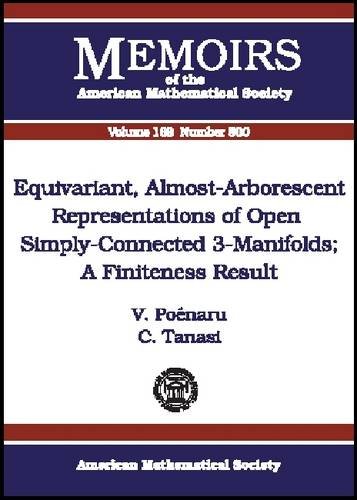Product desciption
Equivariant Almostarborescent Representations Of Open Simplyconnected 3manifolds A Finiteness Result Valentin Poenaru by Valentin Poenaru, C. Tanasi 9780821834602, 0821834606 instant download after payment.
When one extends the (almost) collapsible pseudo-spine representation theorem for homotopy $3$-spheres [Po3] to open simply connected $3$-manifolds $V^3$, new phenomena appear: at the source of the representation, the set of double points is, generally speaking, no longer closed. We show that at the cost of replacing $V^3$ by $V_h^3 = \{V^3$ with very many holes $\}$, we can always find representations $X^2 \stackrel {f} {\rightarrow} V^3$ with $X^2$ locally finite and almost-arborescent, with $\Psi (f)=\Phi (f)$, with the open regular neighbourhood (the only one which is well-defined here) Nbd$(fX^2)=V^3_h$ and such that on any precompact tight transversal to the set of double lines, we have only finitely many limit points (of the set of double points).Moreover, if $V^3$ is the universal covering space of a closed $3$-manifold, $V^3=\widetilde M^3$, then we can find an $X^2$ with a free $\pi_1M^3$ action and having the equivariance property $f(gx)=gf(x)$, $g\in \pi_1M^3$. Having simultaneously all these properties for $X^2\stackrel{f} {\rightarrow} \widetilde M^3$ is one of the steps in the first author's program for proving that $\pi_1^\infty \widetilde M^3=[UNK]0$, [Po11, Po12]. Achieving equivariance is far from being straightforward, since $X^2$ is gotten starting from a tree of fundamental domains on which $\pi_1M^3$ cannot, generally speaking, act freely. So, in this paper we have both a representation theorem for general ($\pi_1=0$) $V^3$'s and a harder equivariant representation theorem for $\widetilde M^3$ (with $gfX^2=fX^2, \, g\in\pi_1M^3$), the proof of which is not a specialization of the first, 'easier' result.But, finiteness is achieved in both contexts. In a certain sense, this finiteness is a best possible result, since if the set of limit points in question is $\emptyset$ (i.e. if the set of double points is closed), then $\pi_1^\infty V_h^3$ (which is always equal to $\pi_1^\infty V^3$) is zero. In [PoTa2] it was also shown that when we insist on representing $V^3$ itself, rather than $V_h^3$, and if $V^3$ is wild ($\pi_1^\infty\not =0$), then the transversal structure of the set of double lines can exhibit chaotic dynamical behavior. Our finiteness theorem avoids chaos at the cost of a lot of redundancy (the same double point $(x, y)$ can be reached in many distinct ways starting from the singularities)


